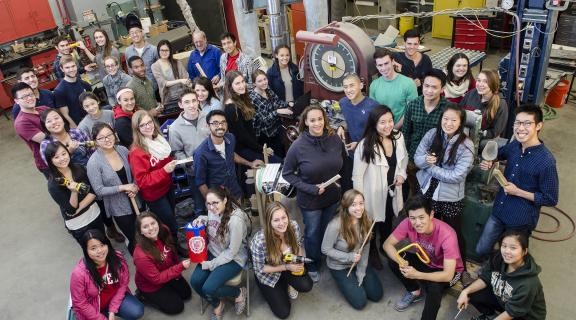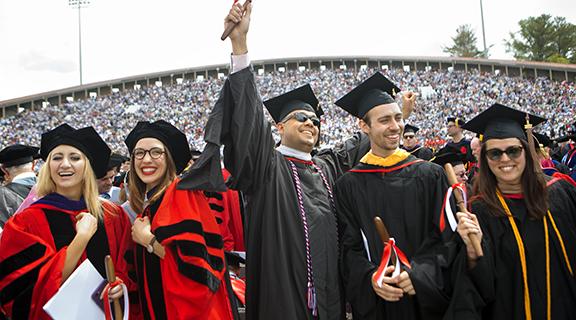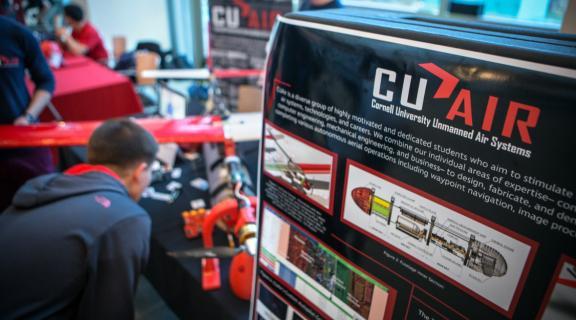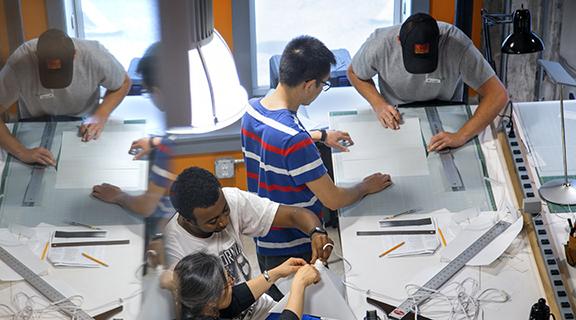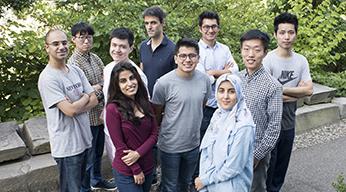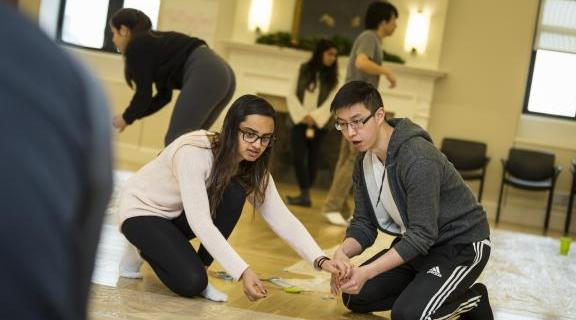
Admissions
Why Cornell Engineering?
"Scientists study the world as it is; engineers create the world that never has been."—Theodore von Karman
Cornell engineers challenge the status quo and do great things. Steeped in an environment of questioning, and with a focus on innovation, Cornell Engineering pursues excellence in all areas. Its faculty, students, and alumni design, build, and test products, improve the world of medicine, inform and shape our laws, create and drive businesses, become research luminaries, and overcome real and perceived barriers to achieve scientific breakthroughs that advance the quality of life on our planet.
We invite you to learn more about Cornell Engineering and its programs.
Did you know?
UltrOZ, a wearable therapeutic ultrasound system for horses, provides up to six hours of unsupervised ultrasound therapy to reduce inflammation and promote healing. The technology grew out of work done by Cornell alum, George K. Lewis, (BME, M.S. 2008, Ph.D., 2012) who co-founded the company.
In 2011, Cornell University was designated by New York City to build a sustainable campus on Roosevelt Island for graduate tech education. Cornell Tech (created under Dean Lance R. Collins) is an innovative, sustainable academic campus made up of a combination of state of the art academic space, along with housing for faculty, students, and staff, and publicly accessible open space.
The Arecibo Observatory in Puerto Rico was designed by Engineering faculty member William E. Gordon. Built beginning in 1960, the observatory is the largest single-dish radar-radio telescope in the world and is home to numerous innovations including the discovery of the first exoplanets, creating a detailed map of the distribution of galaxies in the universe and mapping the surface of Venus.
Prof. Malcolm S. McIlroy created the Electric Analyzer for Fluid Distribution Systems. This device’s tungsten lamp lit up with varying degrees of intensity to indicate change in fluid pressure of municipal gas or water pipes. At Cornell, he continued the development of a nonlinear resistor and resulted in an analog computer that has been a significant contribution to the solution of fluid pipeline network problems.
Robert Thurston, the first director of the Sibley College of Engineering in 1885, held two patents: an autographic recording testing machine for material in torsion and a machine for testing lubricants. In 1875, he also developed the three-coordinate solid diagram for testing iron, steel and other metals. As College Director, he reorganized mechanical engineering and increased the program from 63 to 885 degree candidates.


